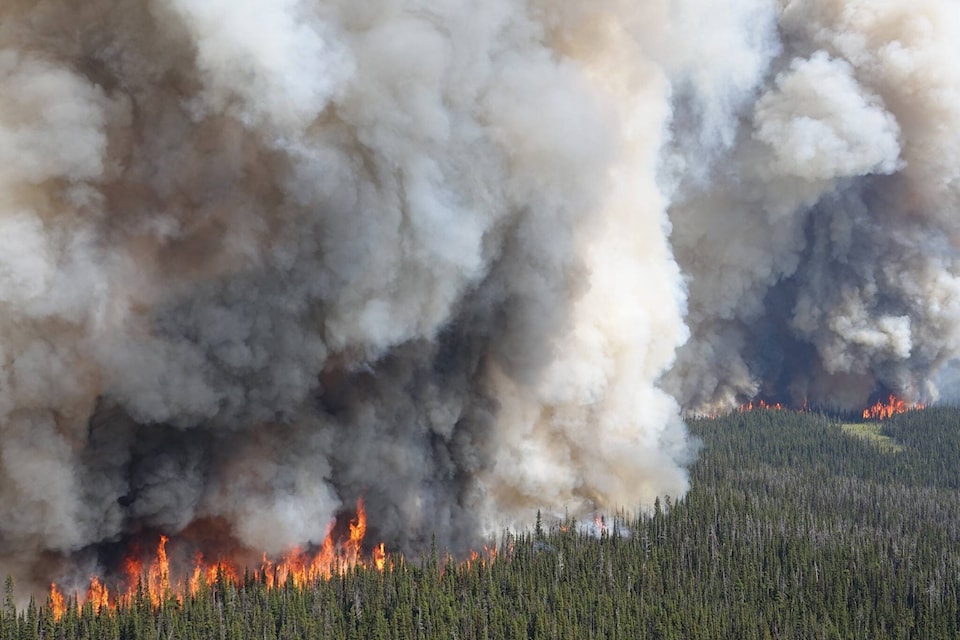Wildfires in British Columbia have already contributed to a record-setting increase in carbon emissions from wildfires alone while contributing to another likely, but yet-to-be confirmed record for Canada.
According to a release Thursday (Aug. 3) from the European Union’s Copernicus Atmosphere Monitoring Service, total carbon emissions from wildfires across Canada totaled 290 megatonnes between Jan. 1 and July 31.
“This is already more than double the previous record for the year as a whole (from 2014) and represents over 25 per cent of the global total for 2023 to date,” it reads.
Converted into climate-change causing carbon dioxide equivalent, as carbon is not equal to carbon dixoide, these emissions add up to about 1,000 megatonnes.
CAMS uses satellite observations of fire radiative power (FRP), a measure of fire intensity and the heat of active fires, to estimate emissions of different pollutants that make up the smoke from Canadian wildfires, which has travelled across the northern hemisphere.
Of the 290 megatonnes of carbon, just under 40 megatonnes came from British Columbia, which places B.C. behind the Northwest Territories with about 55 megatonnes and Quebec with about 70 megatonnes, according to social media posts from Mark Parrington, senior scientist with Copernicus Atmosphere Monitoring Service.
“In recent years we have seen significant wildfires in the (northern hemisphere) but this year’s fire activity in Canada is highly unusual,” Parrington said. “The weather has played a part, with warm and dry conditions increasing the flammability of vegetation and increasing the risk of large-scale fires.”
If warm and dry weather has created conditions conducive to the record-breaking scale of the 2023 wildfires in Canada, climate change is making such conditions more likely in increasing the chance of a longer fire season, CAMS notes.
RELATED: August can be the most challenging month for B.C. wildfires, says Ma
These figures from a European source follow domestic reporting that shows Canada is set to smash its total emission records because of wildfires.
Werner Kurz, a senior research scientist with Natural Resources Canada, told Bloomberg News in late July that wildfires have so far released 1,420 megatonnes of carbon dioxide equivalent as of mid-July.
Kurz noted that these figures (which include non-CO2 greenhouse gases, such as methane and Nitrous oxide) represent preliminary estimates with final figures available in 2025. Total emissions from all other sectors totaled 670 megatonnes of carbon dioxide equivalent in 2021. These figures prompted Kurz to describe Canadian emissions to be “off the scale” compared to previous years.
On 25 June, the Canadian Interagency Forest Fire Centre declared that the 2023 wildfire season has seen the largest burned area in Canada’s recorded history. By the end of July, over 120,000 square-kilometres had been burned, nearly twice as much as the previous record of 71,060 in 1995.
The local wildfire season — already the worst on record based on hectares burned — continues unabated in British Columbia and elsewhere across Canada with August said to be the peak of the wildfire season.
@wolfgangdepner
wolfgang.depner@blackpress.ca
Like us on Facebook and follow us on Twitter.
